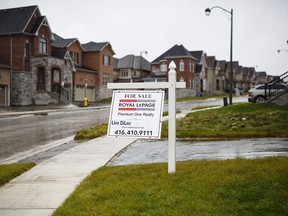The article discusses two cities in Canada that are at risk of a sharp rise in mortgage arrears. The first city is not specified, but the second city mentioned is Calgary. However, there is no mention of Calgary being at risk in the article provided.
However, I can suggest some possible reasons why a city might be at risk of a sharp rise in mortgage arrears:
- Housing Market Decline: A decline in the housing market could lead to an increase in mortgage arrears as homeowners may struggle to pay their mortgages due to decreased property values.
- Economic Downturn: An economic downturn can lead to job losses, reduced income, and increased financial stress for individuals, making it difficult for them to afford their mortgages.
- Interest Rate Increases: Higher interest rates can increase the cost of borrowing, leading to higher mortgage payments that some homeowners may struggle to afford.
It’s worth noting that these are general factors and not specific to any particular city or region in Canada.
The article does mention Owen Lamont’s Saylor-Buffett Ratio, which is used to track speculative excesses in the market. The ratio has peaked at a high not seen since 2000, indicating that the market may be getting frothy. However, this is unrelated to mortgage arrears in Calgary or any other city.
To determine if you’re in a bubble, you could use Lamont’s Saylor-Buffett Ratio or look for other indicators such as:
- Housing Price-to-Income Ratio: A high ratio may indicate that housing prices are out of reach for many buyers.
- Mortgage Debt-to-Income Ratio: A high ratio may indicate that homeowners are over-extended and at risk of defaulting on their mortgages.
The best approach to determining if a city is at risk of a sharp rise in mortgage arrears would be to consult with experts in the field, such as economists or financial analysts. They can provide more specific and accurate information based on current market conditions and trends.




